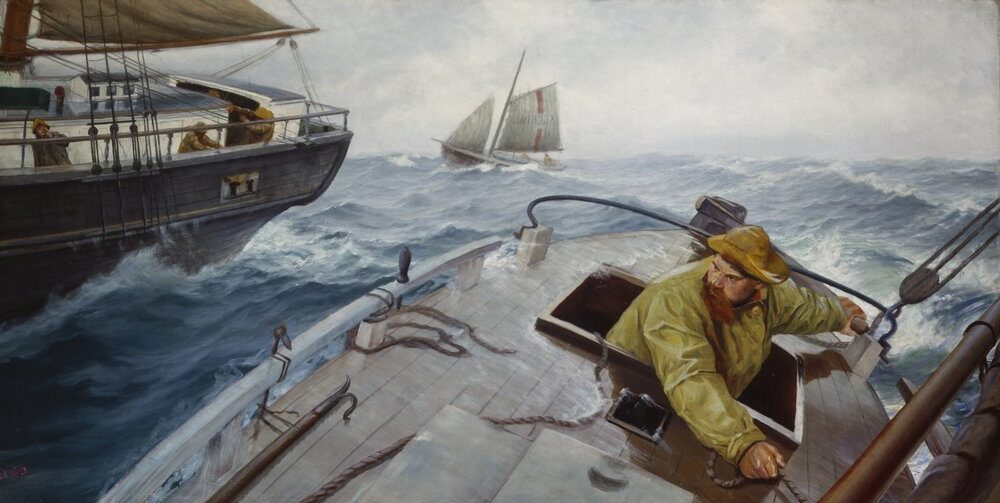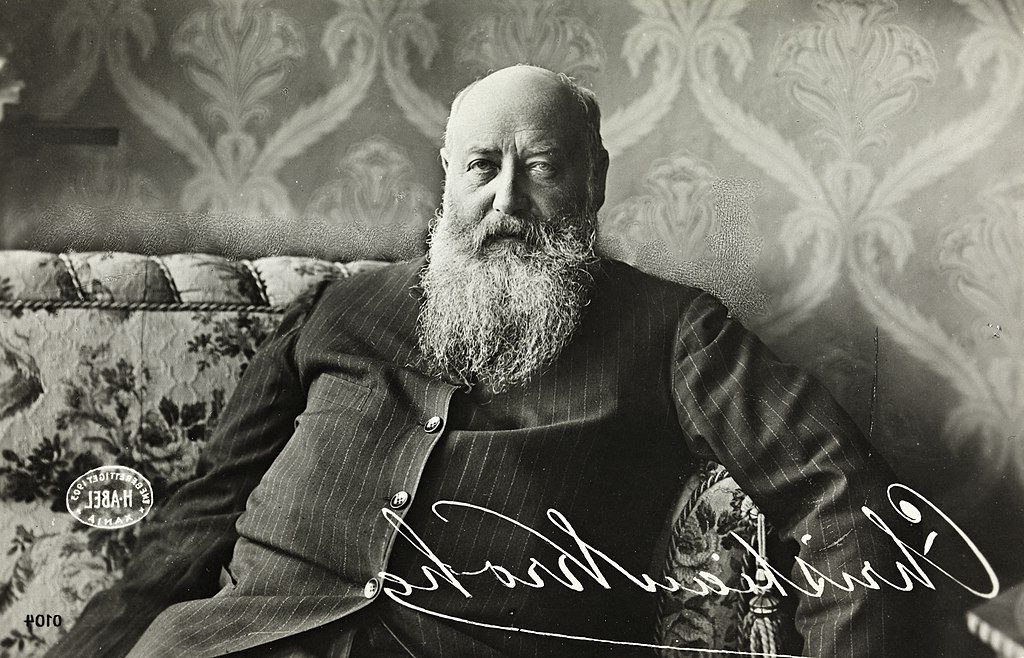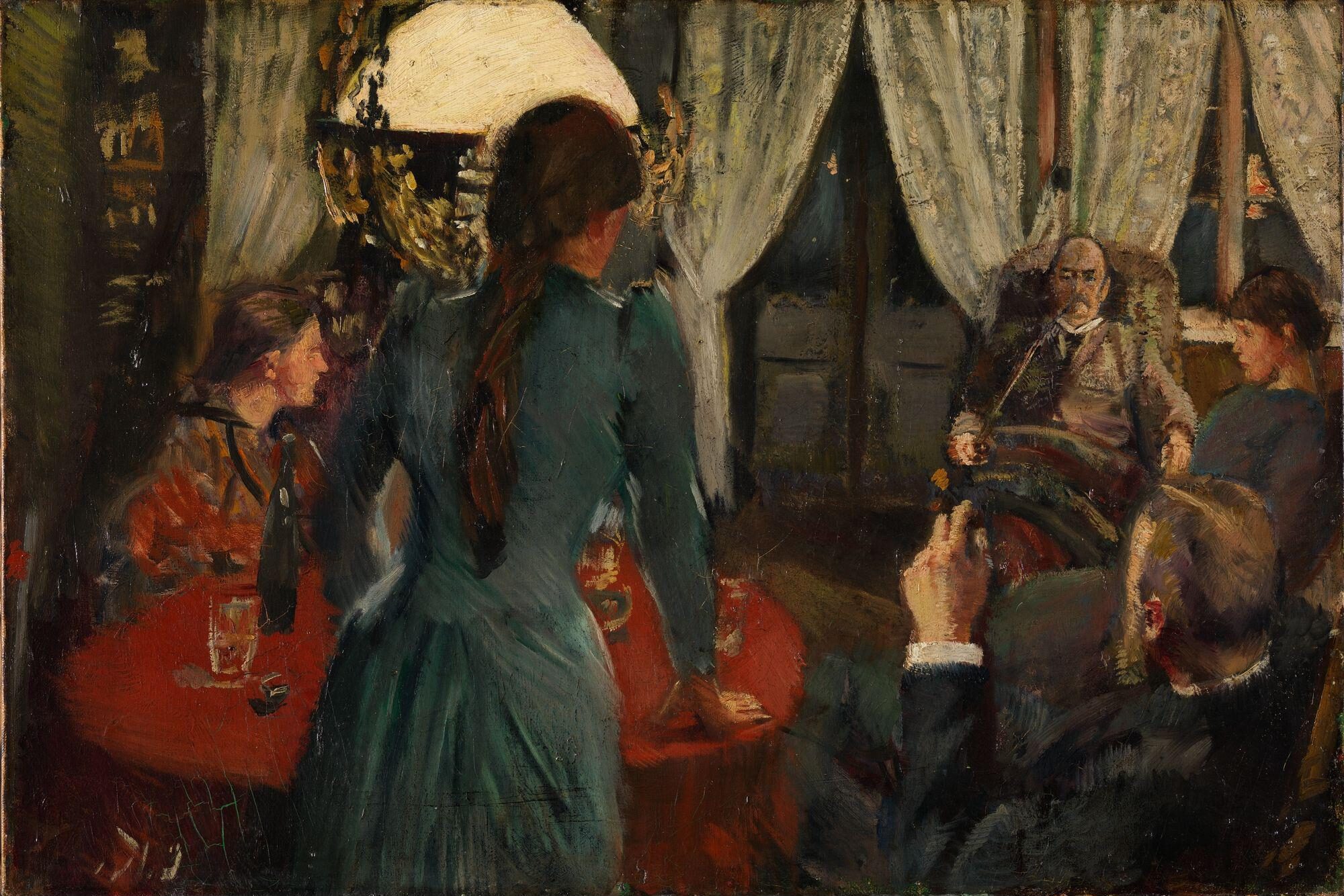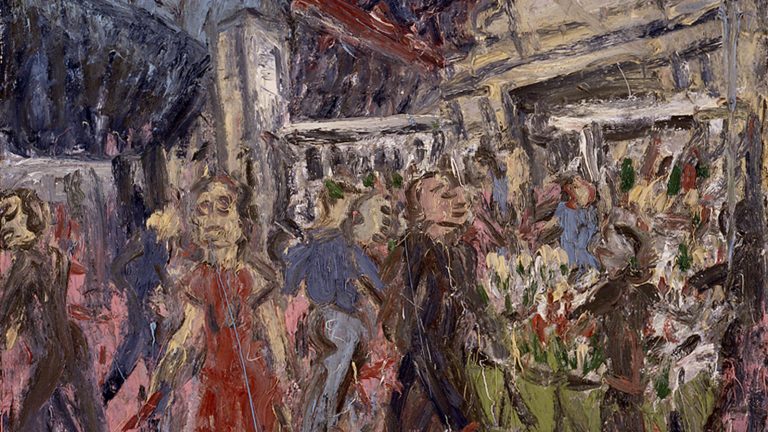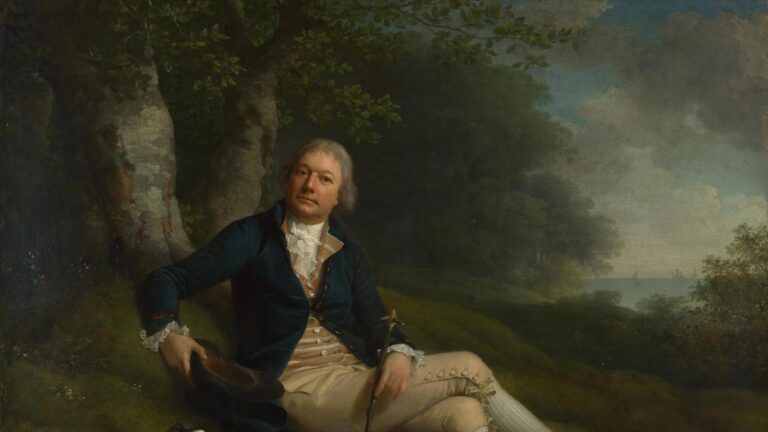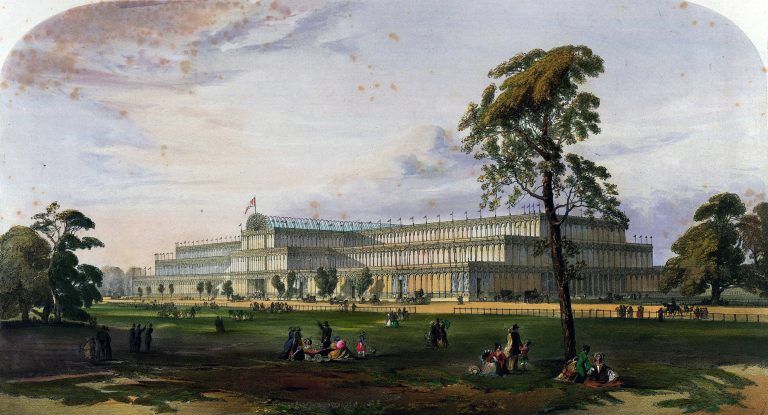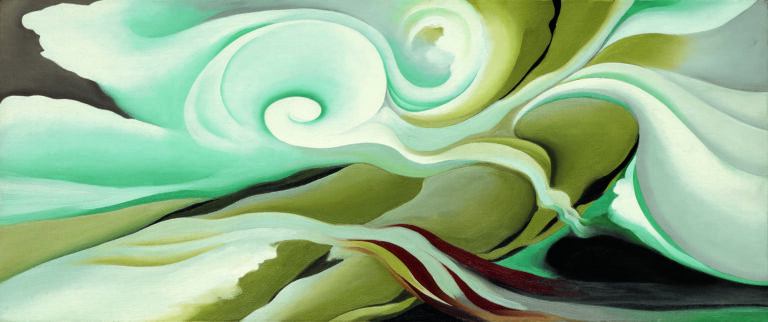Christian Krohg: Painter and Pioneer of Norwegian Naturalism
Born: 13 August 1852, Vestre Aker, Norway
Death: 16 October 1925, Christiania, Norway
Art Movement: Naturalism
Nationality: Norwegian
Teachers: Hans Gude and Karl Gussow
Institution: Art school of Johan Fredrik Eckersberg, Baden School of Art, and Königliche Akademie
Christian Krohg: Painter and Pioneer of Norwegian Naturalism
Life and Career of Christian Krohg
Christian Krohg (1852-1925) was one of Norway’s most influential artists. He combined his passion for painting with journalism and social activism. His work captured the reality of Norwegian life during a transformative period in the nation’s history.
Early Life and Education
Christian Krohg was born on August 13, 1852, in Vestre Aker, a district of Oslo, Norway. He came from a well-connected family, as his father, Georg Anton Krohg, worked as a journalist and publisher.

Albertine at the Police Doctor’s Waiting Room, 1885–87
Initially, Krohg didn’t pursue an artistic path. He studied law at the University of Oslo and briefly worked in the legal profession. This early exposure to social systems would later influence his art’s focus on societal issues.
In 1873, Krohg abandoned his legal career to study painting. He trained under Norwegian painter Johan Fredrik Eckersberg before traveling to Karlsruhe, Germany. There he enrolled at the Baden School of Art (Kunstschule), studying under Hans Gude, a prominent Norwegian landscape painter.
Krohg later moved to Berlin to study with Karl Gussow, whose realistic approach significantly shaped Krohg’s developing style.
Artistic Evolution and Influences
Krohg’s artistic style evolved from formal academic painting toward naturalism. His time in Paris during the 1880s exposed him to impressionist techniques, though he maintained his commitment to realistic social subjects.
The fishing community of Skagen, Denmark became an important location for Krohg’s development. Here, he joined the famous Skagen Painters colony, where artists gathered to capture the unique light and landscape of the region. His paintings from this period, like “The Net Mender,” show his skill in depicting working people with dignity.
Krohg’s naturalistic approach focused on ordinary people and social issues. He rejected sentimentality in favor of direct, honest portrayals. His famous series on prostitution in Christiania (Oslo) revealed harsh living conditions and sparked public debate about social problems.
His friendship with Edvard Munch proved influential for both artists, though they developed distinct styles. Krohg encouraged Munch’s experimental approach while maintaining his own commitment to naturalism.
Contributions to Journalism
Beyond painting, Krohg made significant contributions to journalism. He worked as an illustrator, critic, and eventually editor of the liberal newspaper Verdens Gang in the 1890s.

Sleeping Mother with Child, 1883 by Christian Krohg
His writing skills complemented his artistic vision. Krohg published articles on art theory and social issues, becoming an important voice in Norwegian cultural debates. His novel “Albertine” (1886) addressed prostitution and accompanied his paintings on the same subject.
As a teacher at the Norwegian Academy of Arts, Krohg influenced younger artists through both his artwork and writings. His journalism helped democratize art criticism, making it accessible to ordinary readers rather than only the elite.
Krohg’s dual careers in art and journalism reinforced each other, allowing him to address social concerns through multiple channels and reach wider audiences.
Personal Life and Relationships
In 1888, Christian Krohg married Oda Lasson, who herself became a significant painter. Their marriage formed part of a vibrant artistic partnership, though it faced challenges due to their unconventional lifestyle and Oda’s relationships with other artists.
The Krohgs’ home became a gathering place for Oslo’s artistic community. Their social circle included writers, painters, and intellectuals who were redefining Norwegian culture during this period.
Christian and Oda had three children, including Per Krohg, who followed in his father’s footsteps to become an important Norwegian painter specializing in murals. Per was born in 1889 and later died in 1965.
Despite personal struggles, Krohg maintained productive artistic output throughout his life. He traveled between Norway, Denmark, and France, absorbing influences while maintaining his distinctive artistic voice. His commitment to social issues remained consistent, even as his artistic style evolved over his long career.
Christian Krohg’s Artistic Contributions

Leiv Eirikson Discovering America, 1893 by Christian Krohg
Christian Krohg profoundly shaped Norwegian art through his unflinching social realism and commitment to depicting authentic everyday life. His work focused on marginalized groups and social injustice while employing techniques influenced by both naturalism and impressionism.
Prominent Themes and Subjects
Krohg dedicated his artistic career to portraying social issues with honesty and compassion. Prostitution became one of his most notable subjects, explored in both his painting “Albertine i politilægens venteværelse” (Albertine at the Police Doctor’s Waiting Room) and his novel about the same character. This work exposed the cruel treatment of prostitutes in Norwegian society.
His subjects often included working-class people, fishermen, and those struggling with poverty. Unlike many contemporaries, Krohg painted these individuals with dignity rather than sentimentality.
During his time at the Skagen artists’ colony in Denmark, Krohg painted coastal scenes and fishermen, joining other Scandinavian artists like Frits Thaulow in developing a distinctive Nordic realist style.
Major Works and Recognitions
“Albertine i politilægens venteværelse” stands as Krohg’s most controversial and significant painting. The large-format canvas provoked public outrage by depicting the humiliating medical examination required of suspected prostitutes.
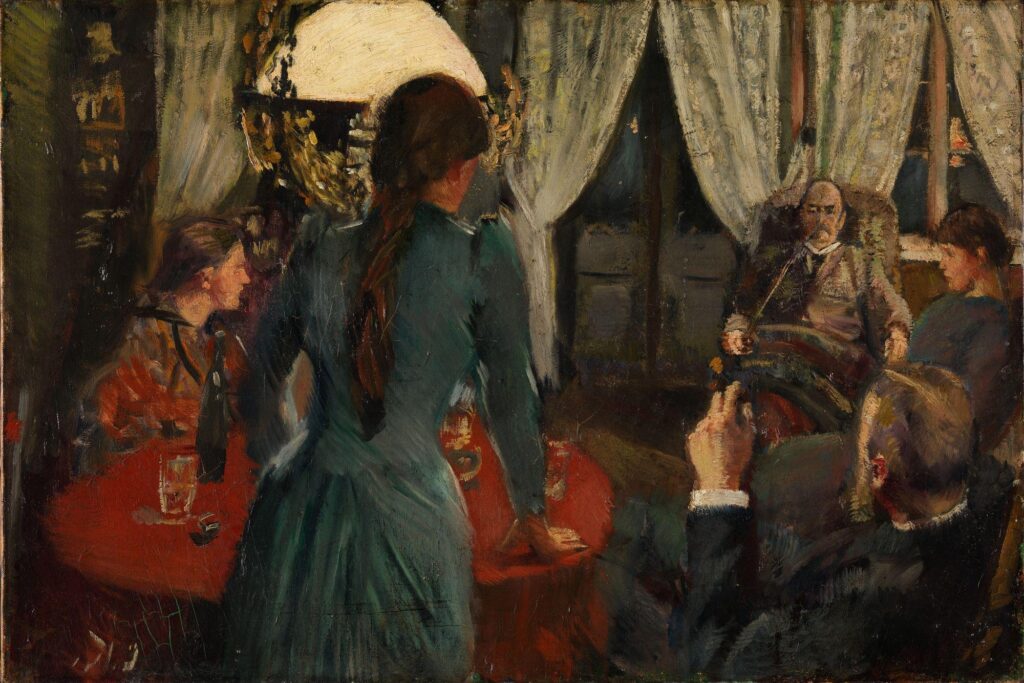
Evening at Løkken, 1889 by Christian Krohg
“The Net Mender” (Garnbinderen) exemplifies his skill in portraying working people with authenticity and respect. Krohg rejected the moralizing sentimentalism common in his era.
“Struggle for Existence” further cemented his reputation as a champion of justice and freedom of expression.
His works are now housed in prestigious collections including the National Museum of Art in Oslo and Skagens Museum in Denmark. As director of Statens Kunstakademi (The Norwegian National Academy of Fine Arts), Krohg shaped a generation of Norwegian artists.
Influence on Future Generations
Krohg’s unflinching social realism influenced Norwegian art well beyond his lifetime. His approach to controversial subjects opened doors for later artists to tackle difficult social themes.
Stylistically, Krohg bridged naturalism and impressionism, demonstrating to Norwegian artists how international movements could be adapted to local subjects and sensibilities. His techniques showed similarities to French painters like Manet while maintaining distinctly Nordic themes.
His teaching position at Statens Kunstakademi allowed him to directly mentor young artists. Through his editorial work at the newspaper Politiken, Krohg also shaped public discourse on art.
Krohg’s legacy lives on in Norway’s continuing tradition of socially engaged art. His willingness to challenge authority and expose injustice established a model for artists as advocates for social change.
Christian Krohg and the Skagen Art Movement

Look Ahead, Bergen Harbour, 1884 by Christian Krohg
Christian Krohg’s time at Skagen marked a significant period in his artistic development. The coastal village became a creative hub where he connected with fellow artists who shared his commitment to realistic portrayal of everyday life.
The Artists’ Colony in Skagen
Skagen, located at the northernmost tip of Denmark’s Jutland peninsula, attracted numerous Nordic artists in the late 19th century. Krohg first visited this fishing village in 1879, drawn by its unique natural light and authentic coastal community. The Skagen Painters, as they became known, gathered to capture the area’s distinctive atmosphere and the lives of local fishermen and their families.
While at Skagen, Krohg created some of his most notable works, including “The Net Mender” (Garnbinderen) in 1879. This painting exemplifies his naturalist approach, portraying working people with dignity and realism.
The artists’ colony valued direct observation and painting outdoors, embracing the environment’s natural conditions rather than idealized studio settings.
Collaborations and Connections
Krohg formed meaningful relationships with other prominent artists at Skagen. He worked alongside figures like P.S. Krøyer, Anna Ancher, and Michael Ancher, who shared his interest in portraying everyday life with authenticity.
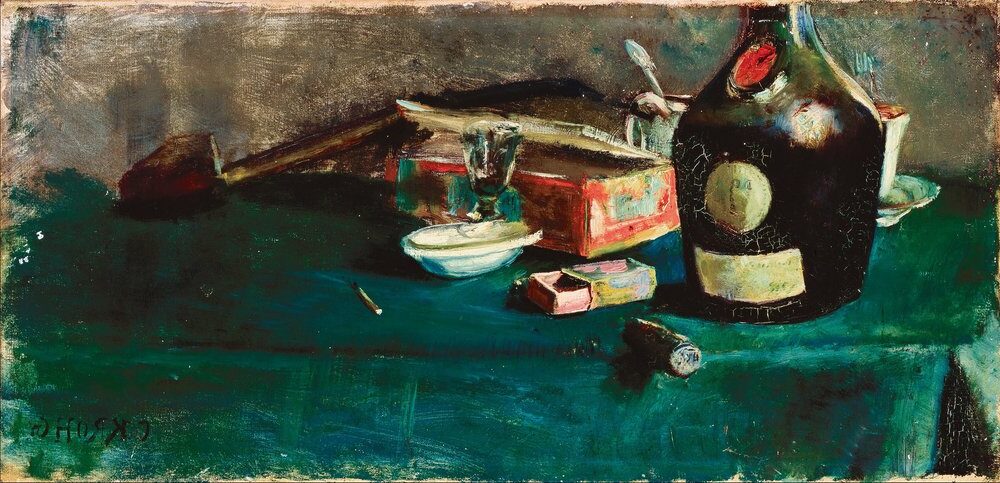
Still Life with a D.O.M. Bottle, 1883 by Christian Krohg
These connections influenced Krohg’s artistic style and reinforced his commitment to social realism. The artists frequently gathered at Brøndums Hotel, which became the social center of the colony, where they exchanged ideas and critiqued each other’s work.
The spirit of collaboration extended to their art as well, with artists often painting each other and shared scenes. This cooperative environment contrasted with Krohg’s later involvement with the Kristiania Bohemian circle in Norway, though both groups valued artistic freedom and authenticity.
Krohg’s Skagen period helped establish his reputation as a leading Nordic realist, with many works now displayed at Skagens Museum.
Frequently Asked Questions
Christian Krohg made significant contributions to Norwegian art through his realist paintings and teaching. His work captured social issues and everyday life in Norway during the late 19th and early 20th centuries, establishing him as a key figure in Scandinavian art history.
What period and style is Christian Krohg best known for in his art?
Christian Krohg (1852-1925) is primarily known for his work in the Naturalist and Realist movements of the late 19th century. He was active during a period when Norwegian art was developing its national identity.
His style reflected the social realist approach that gained prominence across Europe during this time. Krohg rejected idealized representations in favor of depicting life as it truly appeared.
The artist was also associated with the Skagen Painters, a group of Scandinavian artists who gathered in Skagen, Denmark to paint outdoors and capture natural light.
Can you describe the main themes and subjects of Christian Krohg’s paintings?
Krohg’s work prominently featured social issues and the lives of ordinary people. He often painted fishermen, sailors, and working-class individuals going about their daily activities.
He was known for addressing controversial social topics including poverty, prostitution, and inequality. His paintings served as social commentary on the challenges faced by marginalized groups in Norwegian society.
Krohg also created many portraits and scenes of everyday life that reflected his interest in authentic human experiences. His work at Skagen featured coastal scenes and the fishing community.
How did Christian Krohg contribute to the development of naturalism in Norwegian art?
Krohg pioneered naturalism in Norwegian art by bringing raw, unfiltered reality to his canvases. He rejected romantic notions in favor of honest portrayals of life’s difficulties and beauty.
His commitment to social issues gave Norwegian art a stronger political dimension. Krohg believed art should serve as a mirror to society and prompt discussions about social reform.
As both an artist and journalist, he used his platform to advocate for change. His painting “Albertine in the Police Doctor’s Waiting Room” sparked public debate about prostitution laws in Norway.
What are some of the most acclaimed works by Christian Krohg, and where can they be seen?
“Albertine in the Police Doctor’s Waiting Room” (1887) is among Krohg’s most famous works, housed at the National Gallery in Oslo. This painting depicts a prostitute awaiting a mandatory medical examination.
“Struggling for Existence” shows fishermen at sea during difficult conditions and exemplifies his focus on working-class struggles. The National Museum of Art in Norway holds several of his important works.
“The Sick Girl” reveals Krohg’s talent for emotional depth and social commentary. Many of his paintings can be viewed in major Scandinavian museums, particularly in Oslo and Copenhagen.
In what ways did Christian Krohg influence future generations of Norwegian artists?
Krohg’s unflinching social realism inspired later Norwegian artists to address contemporary issues in their work. His technical approach to light and composition remained influential throughout the 20th century.
As a prominent figure in Norway’s cultural scene, he helped establish a distinctly Norwegian artistic identity. This national artistic character would continue to evolve through subsequent generations.
His integration of journalism and visual art created a model for socially engaged creative practice. Many Norwegian artists followed his example of using art as a vehicle for social commentary.
Could you highlight the role of Christian Krohg as a teacher and who were his notable students?
Krohg served as a professor and later director at the Norwegian Academy of Arts. There, he shaped a generation of artists. His teaching emphasized observation, technical skill, and social awareness.
One of his most famous students was his son, Per Krohg (1889-1965), who became a significant painter in his own right. Per Krohg continued his father’s legacy while developing his own style in mural painting.
Krohg’s teaching philosophy encouraged students to develop their individual approaches while maintaining a connection to social reality. His influence extended beyond individual students to affect the entire trajectory of Norwegian art education.

